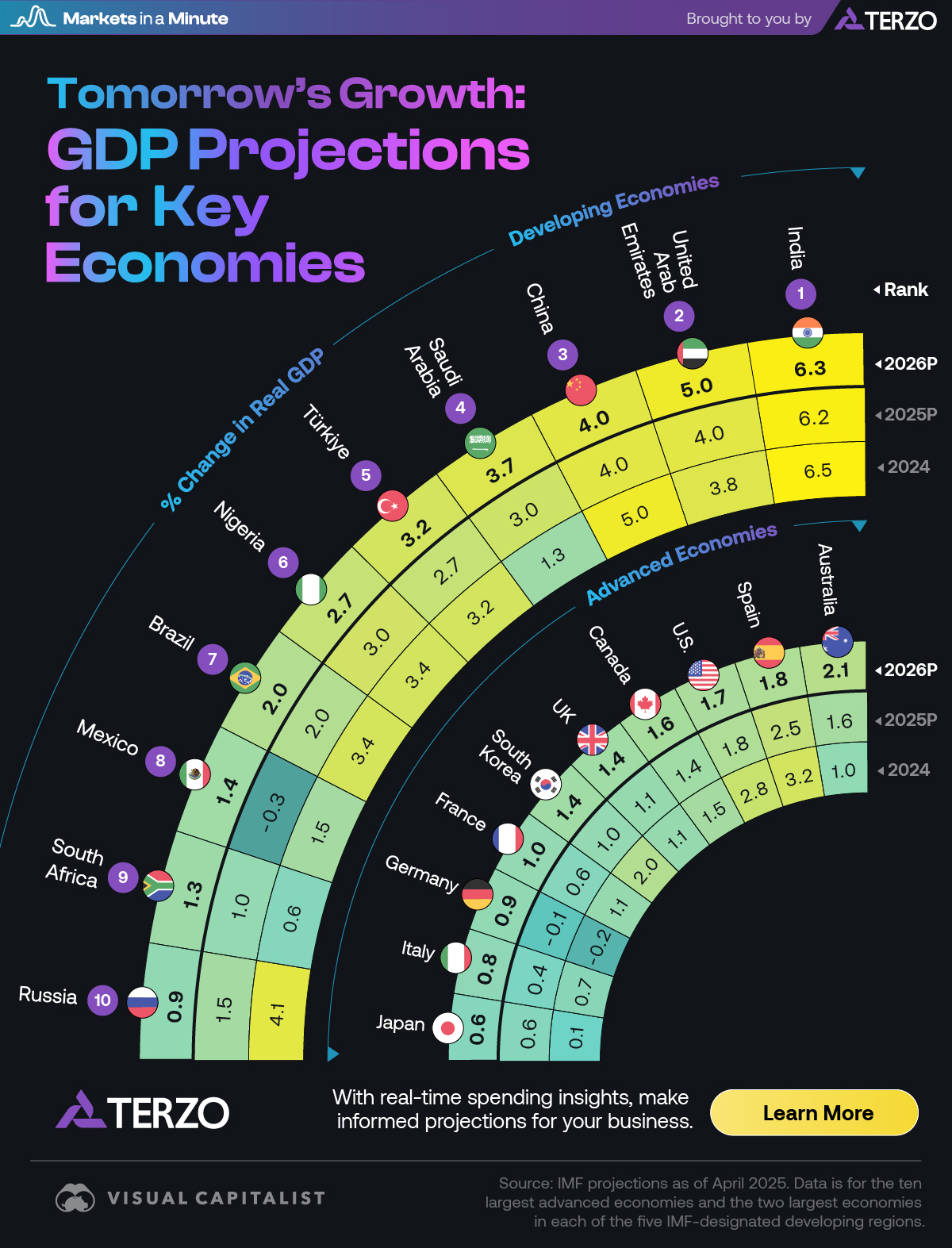Analysis of Global Economic and Geopolitical Factors in the Context of Sustainable Development Goals
Geopolitical Tensions and the Challenge to SDG 16: Peace, Justice, and Strong Institutions
Recent geopolitical developments, particularly concerning the conflict in Ukraine, present a significant challenge to the achievement of Sustainable Development Goal 16 (SDG 16), which aims to promote peaceful and inclusive societies. International discourse has intensified following comments from former U.S. President Donald Trump regarding potential territorial concessions as a path to peace. This has been met with strong opposition from Ukrainian President Volodymyr Zelenskyy and European leaders, highlighting the complexities of negotiating a just and sustainable peace. The upcoming summit between U.S. and Russian leaders is a critical juncture, with its outcome potentially impacting global stability and the principles of territorial integrity central to SDG 16.
U.S. Labor Market Analysis and Implications for SDG 8: Decent Work and Economic Growth
The state of the U.S. labor market is a central point of debate regarding monetary policy and its alignment with SDG 8, which promotes sustained, inclusive, and sustainable economic growth, full and productive employment, and decent work for all. A recent jobs report has prompted discussions on whether observed weaknesses stem from declining labor demand or constrained labor supply.
Competing Perspectives on Labor Market Dynamics
- The Labor Supply Constraint Argument: This perspective, advanced by analysts such as Dhaval Joshi of BCA Research, suggests that the labor force is smaller than the total demand. Key points include:
- A belief that a shortage of available workers is limiting job creation.
- A warning that stimulating demand through interest rate cuts could exacerbate the demand-supply imbalance, reigniting inflation and undermining sustainable economic growth.
- The observation that a decline in net immigration has created a labor “supply shock,” directly impacting the availability of workers and progress towards inclusive employment targets under SDG 8.
- The Weakening Labor Demand Argument: Proponents of this view, including Federal Reserve Governor Michelle Bowman and HSBC economist Ryan Wang, argue that demand is slowing. Evidence cited includes:
- A decline in the employment-to-population ratio, indicating a potential weakening in the economy’s ability to provide decent work for all.
- A slowdown in gross hiring rates, despite population growth.
- The interpretation that low firing rates are a result of employer caution following pandemic-era labor shortages, rather than a sign of robust demand.
The resolution of this debate is critical for formulating policies that support SDG 8. An incorrect diagnosis could lead to policy errors that either stifle necessary growth or trigger inflationary pressures, disproportionately affecting vulnerable populations and hindering progress towards SDG 10 (Reduced Inequalities).
Corporate Profitability and Sectoral Performance: A Barometer for Sustainable Economic Progress
An analysis of corporate profit growth provides insights into the health of the economy and its alignment with several SDGs, including SDG 8 (Decent Work and Economic Growth), SDG 9 (Industry, Innovation, and Infrastructure), and SDG 11 (Sustainable Cities and Communities).
Overall Profit Trends and Underlying Factors
While nominal sales growth appears stable, a closer examination of operating profits (excluding major tech, energy, and financial firms) reveals a faltering trend. This suggests potential pressures on sustainable economic activity. The slowdown is not uniform, indicating varied performance across sectors and highlighting specific challenges to sustainable development.
Sector-Specific Analysis and SDG Linkages
The consumer discretionary sector shows significant weakness, with operating profits declining. An examination of the contributing factors reveals specific obstacles to sustainable and equitable growth:
- Automotive Sector: Profit declines at major carmakers like General Motors and Ford are largely attributed to tariffs. This highlights how trade policies can impact industrial performance and the economic stability targeted by SDG 8 and SDG 9.
- Retail and Service Turnarounds: Major brands such as Nike and Starbucks are undergoing strategic realignments, with their profit struggles reflecting internal operational challenges rather than a broad economic downturn.
- Homebuilding Sector: This sector’s performance directly relates to SDG 11. High mortgage rates have constrained demand, leading to reduced profits for major builders. This affordability crisis impacts the goal of making cities and human settlements inclusive, safe, resilient, and sustainable.
Consumer Sentiment and Inequality (SDG 1 & SDG 10)
Analysis of the restaurant industry offers a nuanced view of consumer health. While some mid-range chains perform well, there are clear indications of economic strain on lower-income households, a key concern for SDG 1 (No Poverty) and SDG 10 (Reduced Inequalities).
- Chipotle’s CEO noted that low-income consumers are actively seeking lower-priced value meals.
- McDonald’s executives observed that poorer customers were reducing their spending.
- At Yum Brands, the primary growth driver in the U.S. is the low-cost Taco Bell brand.
These trends suggest that while a widespread demand collapse is not evident, economic pressures are concentrated among vulnerable groups. This uneven impact underscores the challenge of achieving inclusive growth and reducing inequality, which are central tenets of the 2030 Agenda for Sustainable Development.
SDGs Addressed in the Article
SDG 8: Decent Work and Economic Growth
- The article extensively discusses the state of the US labor market, debating whether the “falling number of new jobs” is due to falling labor demand or a shrinking labor supply. This directly relates to creating and sustaining employment.
- It analyzes economic performance through corporate earnings, noting the “faltering underlying profit growth at big US companies” and tracking metrics like “S&P 500 operating profits” and “sales growth,” which are key components of economic growth.
- The discussion on different sectors, such as the booming tech industry versus the sluggish materials and industrials sectors, touches upon economic productivity and diversification.
SDG 10: Reduced Inequalities
- The article highlights how economic pressures disproportionately affect different income groups. It notes that “poorer customers were staying home” and “the low-income consumer is looking for value,” pointing to rising economic inequality.
- It explicitly links labor supply issues to migration policies, stating that the “fall in net immigration under the Trump administration has created a labour ‘supply shock’,” which connects to policies on migration and their economic impact.
SDG 11: Sustainable Cities and Communities
- The analysis of the consumer discretionary sector points to issues in the housing market. It states that homebuilders face “weak demand” because “new home demand continues to be impacted by ongoing affordability constraints and cautious consumer sentiment,” which directly relates to the goal of affordable housing.
SDG 16: Peace, Justice and Strong Institutions
- The article begins by referencing the “war in Ukraine” and the international diplomatic efforts surrounding it, including a “planned summit between the US president and Russian leader Vladimir Putin” to potentially achieve “peace in the region.” This directly addresses the goal of promoting peaceful societies.
Identified SDG Targets
SDG 8: Decent Work and Economic Growth
- Target 8.1: Sustain per capita economic growth in accordance with national circumstances and, in particular, at least 7 per cent gross domestic product growth per annum in the least developed countries. The article’s focus on “faltering underlying profit growth,” “sales growth,” and the overall health of the corporate economy relates to this target.
- Target 8.5: By 2030, achieve full and productive employment and decent work for all women and men, including for young people and persons with disabilities, and equal pay for work of equal value. The entire debate on whether the issue is “labour demand or labour supply,” along with discussions on job creation, hours worked, and the employment-to-population ratio, aligns with this target.
SDG 10: Reduced Inequalities
- Target 10.2: By 2030, empower and promote the social, economic and political inclusion of all, irrespective of age, sex, disability, race, ethnicity, origin, religion or economic or other status. The article’s observation that “the low-income consumer” is struggling and changing spending habits due to “low consumer sentiment” points to challenges in economic inclusion.
- Target 10.7: Facilitate orderly, safe, regular and responsible migration and mobility of people, including through the implementation of planned and well-managed migration policies. This is directly addressed by the statement that the “fall in net immigration under the Trump administration has created a labour ‘supply shock’.”
SDG 11: Sustainable Cities and Communities
- Target 11.1: By 2030, ensure access for all to adequate, safe and affordable housing and basic services and upgrade slums. The article’s mention of “ongoing affordability constraints” in the housing market, high “mortgage rates,” and resulting “weak demand” for new homes speaks directly to the challenge of ensuring access to affordable housing.
SDG 16: Peace, Justice and Strong Institutions
- Target 16.1: Significantly reduce all forms of violence and related death rates everywhere. The reference to the “war in Ukraine” highlights an ongoing violent conflict that this target aims to prevent and resolve.
Implied Indicators for Measuring Progress
SDG 8: Decent Work and Economic Growth
- Employment-to-population ratio: The article explicitly mentions this indicator, noting its fall “to 59.6 per cent from 60.4 per cent in November 2023.”
- Growth rate of employment/job creation: The “falling number of new jobs” and slowdown in “gross hiring” are mentioned as key metrics.
- Average hours worked: The article refers to the “number of total hours worked — the number of people employed, multiplied by the average work week” as a stable indicator.
- Growth rate of corporate profits and revenue: The article uses “S&P 500 operating profits” and “sales growth” as indicators of economic health.
SDG 10: Reduced Inequalities
- Net migration rate: The article directly points to the “fall in net immigration” as a key factor, which can be used as an indicator for migration policies and their effects.
- Consumer spending patterns by income level: While not a formal indicator, the article’s qualitative evidence that “poorer customers were staying home” and “the low-income consumer is looking for value” serves as an informal measure of economic disparity.
SDG 11: Sustainable Cities and Communities
- Housing affordability metrics: The article implies the use of indicators like “mortgage rates” and qualitative assessments of “ongoing affordability constraints” to measure access to affordable housing.
SDG 16: Peace, Justice and Strong Institutions
- Existence of armed conflict: The direct mention of the “war in Ukraine” serves as a primary indicator of a failure to achieve peace and security in the region.
Summary of Findings
| SDGs | Targets | Indicators |
|---|---|---|
| SDG 8: Decent Work and Economic Growth | 8.1: Sustain per capita economic growth. 8.5: Achieve full and productive employment and decent work for all. |
|
| SDG 10: Reduced Inequalities | 10.2: Empower and promote social and economic inclusion of all. 10.7: Facilitate orderly, safe, regular and responsible migration. |
|
| SDG 11: Sustainable Cities and Communities | 11.1: Ensure access for all to adequate, safe and affordable housing. |
|
| SDG 16: Peace, Justice and Strong Institutions | 16.1: Significantly reduce all forms of violence and related death rates everywhere. |
|
Source: ft.com







